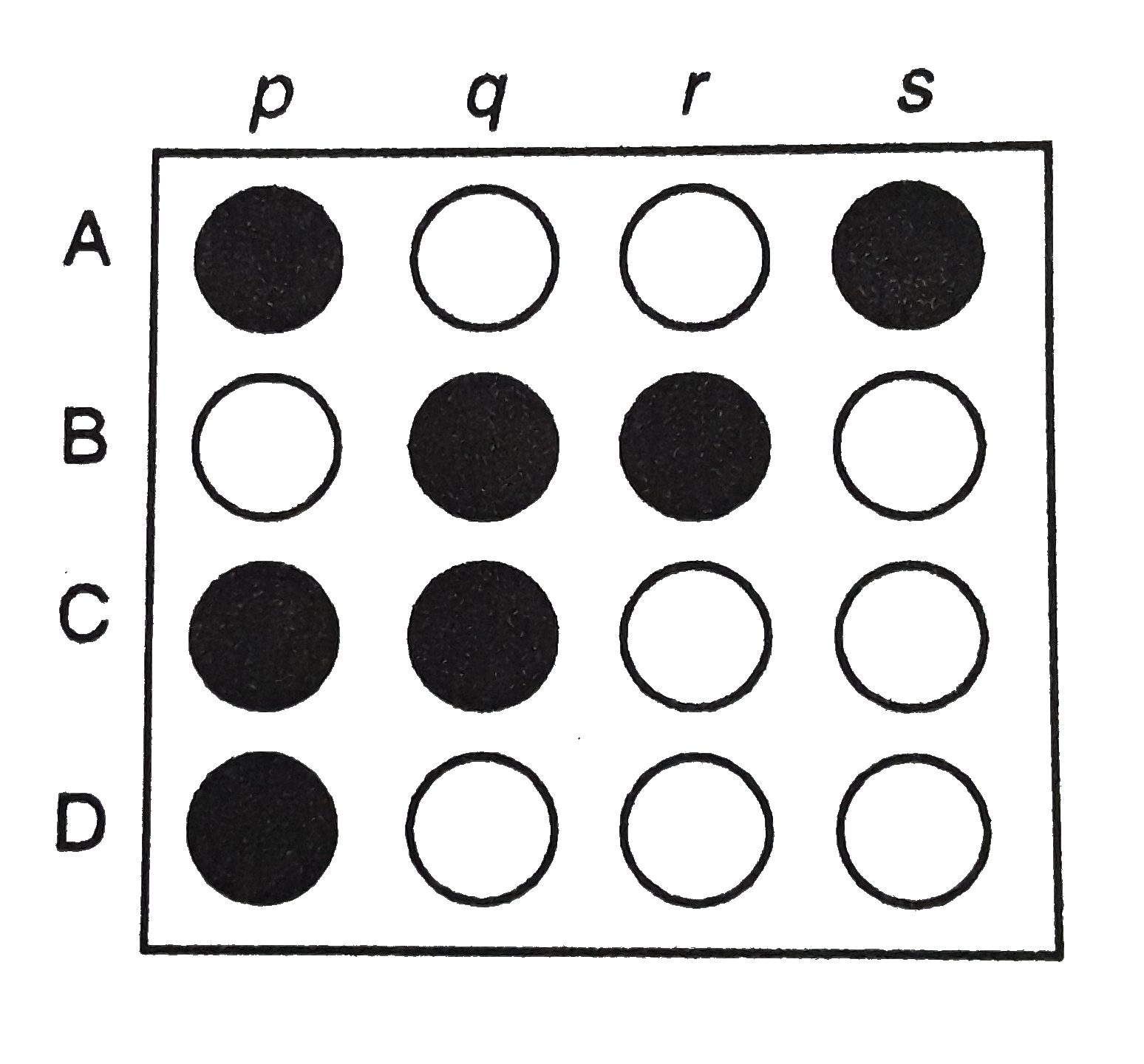Column IColumn II(A)Li+(g)<Be+2(g)(P)1stionisation energy(B)Li+(g)<Be+2(g)(Q)Temdemcy to gain an electron(C)O(g)>P(g)(R)Electronegativity(S)Effective nuclear charge value
The correct Answer is:(A) = PS, (B) = PQRS, (C ) = PQR
(A) H→He,Zeff↑IE↑
(B) l1s2i+(g)<Be+22s2 all propertis greater due to more charge density
(C ) Zeff of P(g)>O(g)
Topper's Solved these Questions
- TEST PAPERSBOOK - BANSALCHAPTER - TEST PAPERSEXERCISE - CHEMISTRY PART (C )
4 Videos
- TEST PAPERSBOOK - BANSALCHAPTER - TEST PAPERSEXERCISE - CHEMISTRY PART-A
9 Videos
- TEST PAPERSBOOK - BANSALCHAPTER - TEST PAPERSEXERCISE - CHEMISTRY PART (A)
14 Videos
- SOLUTIONSBOOK - BANSALCHAPTER - SOLUTIONSEXERCISE - Exercise4
32 Videos
- THERMOCHEMISTRYBOOK - BANSALCHAPTER - THERMOCHEMISTRYEXERCISE - Exercise 4
15 Videos
Similar Questions
Match the transformation in column I with appropriate option in column II
Column IColumn II(A)CO2(s)→CO2(g)(p)phase transition(B)CaCO3(s)→CaO(s)+CO2(g)(q)allotropic change(C)2H⋅→H2(g)(r)ΔH is positive(D)P(white, solid)→P(red, solid)(s)ΔS is positive(t)ΔS is negative
View SolutionColumn-IColumn-II(A)Order of I.E1(P)Mg<Al<Si(B)Order of size(Q)Li>Be>B>C(C)Order of electronegativity (R)Li>Na(D)Order of electron affinity(S)Cl>F>Br>I(T)Li>Mg>Na>P
View SolutionMatch the transformation in colums I with appropriate options in column II.
Column IColumn II(A)CO2(s)→CO2(g)(p)phase transition(B)CaCO3(s)→CaO(s)+CO2(g)(q)allotropic change(C)2H.→H2(g)(r)ΔHis positive(D)P(white, solid)→P(red,solid)(s)ΔSis positive(t)ΔSis negative
View SolutionMatch the transformation in colums I with appropriate options in column II.
Column IColumn II(A)CO2(s)→CO2(g)(p)phase transition(B)CaCO3(s)→CaO(s)+CO2(g)(q)allotropic change(C)2H.→H2(g)(r)ΔHis positive(D)P(white, solid)→P(red,solid)(s)ΔSis positive(t)ΔSis negative
View SolutionMatch the increasing orders given in column I with the property given in column II
Column-IColumn-II(A)Na+<F−<O2−<N3−(p)Electronegativity(B)Li+<Na+<K+<Rb+<Cs+(q)Nuclear charge(C)OltSltFltCl(r)Size(D)Cl−<K+<Ca2+<Sc2+(s)Electron affinity(t)Ionisation energy
View SolutionMatch the characteristics mentioned in Column II with the process in Column I.
Column IColumn II(A)LiF(s)+Aqua→LiF(aq)(p)Exothermic(B)KF(s)+Aqua→KF(aq)(q)Endothermic(C)O(g)+e−→O−(g)(r)Positive affinity(D)O−(g)+e−→O2−(g)(s)Negative affinity
View SolutionIf earth decreases its rotational speed. Match the following columns
Column-IColumn-II(A)Value of g at pole(p)Will remain same(B)Value of g at equator(q)Will increase(C)Distance of geostationary(r)Will decrease(D)Energy of geostationary satellite(s)Cannot say
View SolutionColumn-IColumn-II(A) Electron affinity(P) Depends upon effective nuclear charge.(B) Ionisation potential(Q) Depends upon shielding constant(C) Electronegativity(R) Depends upon half filled and fully filled electronic configuration(S) Units K-Cal/mole
View SolutionColumn-IColumn-II(a)C(s,graphite)+02(g)→CO2(g)(p)ΔH∘_(Combustion)(b)C(s,graphite)→C(g)(q)ΔH∘_(combustion)(c)CO(g)+12O2(g)→CO2(g)(r)ΔH∘_(atomization)(d)CH4(g)→C(g)+4H(g)(s)ΔH∘(sublimation)
View SolutionStatements in Column I are labelled as A,B,C and D whereas the statements in Column II are labelled as p,q,r and s . The answers to these question are to be appropriately bubbled as illustrated in the following example.
If the correct matches are A−p,A−SB−q,B−r,C−p,C−q and D−p then correctly labelled 4×4 matrix should look like the following

(Column I,,,,Column II),((A)N2(g)+3H2(g)⇔2NH3(g),ΔH=−92.5kJ,,,,(p) K increases with increase in temperature),((B)N2(g)+O2(g)⇔2NO2(g),ΔH=+180kJ,,,,(q) K decreases with increase in temperature),((C)A(g)+B(g)⇔2C(g)+D.(g),ΔH=+ve,,,,(r ) Pressure has no effect. ),((D)PCl5⇔PCl3+Cl2,ΔH=+ve,,,,(s) Catalyst has no effect)
View Solution
